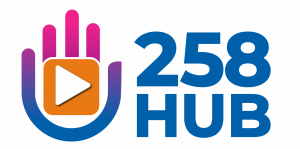FAQs
The Frequently Asked Questions are questions we have been asked by families using ASL RAPP over the last several years. We have tried to give you more information about how and why we do what we do. If there is a question that we have missed please let us know.

ALSO’s Deaf Family Literacy Project – ASL Reading and Parents Program (ASL RAPP)
ASL RAPP provides evidence based language learning tools and resources. It promotes language learning by building the skills of both the parent and the child. We work with Deaf and hard of hearing children (1-7 years) and their parents. ASL RAPP provides parents with the tools to support the ASL language development of their Deaf or hard of hearing children as well as themselves.
ASL RAPP aims to increase family connections and family communication; it allows parents to learn with their child at home; it gives parents the tools they need to support their child’s language learning as well as their own.
This is the bologna in our sandwich, the cheese on our cracker, the jam on our toast; the key ingredients for ASL RAPP.
- Every child can learn. Every parent can learn.
- All children communicate. It is up to parents and professionals to figure out how and what a child is communicating and build on that skill.
- Each child is unique. Be willing to let the child teach and lead you.
- Blending of methodologies and technologies is often required. Be flexible and open to different methods and modes of communication.
- Children acquire language through interaction.
- Development of communication takes time and patience.
- Children need to develop effective social skills. It is through language that children develop social, emotional and cognitive abilities that are critical to timely development in all developmental areas.
- Families are critical for success. Parents are a child’s first and most important teachers.
- Cross disciplinary professionals must work together effectively.
Jones, T.W., Jones, J. K., & Wing, K.M. (2006). Students with multiple disabilities. In D. F. Moores & D.S. Martin (Eds.), Deaf learners: Developments in curriculum and instruction (pp. 127-143). Washington, DC” Gallaudet University Press.
Hands & Voices. www.handsandvoices.org. Communication Considerations A-Z
Learning ASL through storytelling is fun for both parents and children. Storytelling naturally engages children and parents allowing them to learn ASL and also to access their innate ability to ‘tell’ a story through gestures. Parents who have confidence in their own ability to support their child’s learning are better able to have supportive, nurturing relationships with their children. These tools and resources open a door for families with Deaf or hard of hearing children enabling them to succeed, be ready for school and develop a system for family communication. Family communication supports close loving relationships and sets the foundation for positive parent-child interaction.
Early Words (www.earlywords.ca)
Note for parents: Most of the children we support with ASL RAPP are between 1 and 7 years of age. They may be well beyond the stages below or they may be somewhere on the language learning continuum. The age of the child may not necessarily match the ages associated with the Sign Language Milestones listed.
Early Language Development – Sign Language Milestones
Birth – 3 months
- looks around with alertness
- is attracted to human movement
- looks attentively at a person’s face
- responds to smiles by smiling back
- enjoys cuddling and holding
- plays with hands and fingers and enjoys hand plays
6 months – 9 months
- enjoys hand babbling – repetitive hand movements such as opening and closing hands in a rhythm without associated leg movement
- turns head to locate moving objects, and to watch sign movements used to communicate
- looks at common objects and family members when named in ASL
- understands simple ASL words
9 months – 12 month
- begins hand babbling with varied patterns
- begins to use simple movements with hand shapes, such as straight forward or up and down
- points to self and things
- signs first ASL words using simple hand shapes, such as “mine”, “more”, “milk”, “mommy”
- has vocabulary of 10 signs
12 months – 18 months
- begins to combine ASL words into simple two sign sentences, such as “eat more”, “ouch fall”
- uses touch and gesture to summon parents and to indicate needs
- asks questions, such as: “yes” or “no” with eyebrows raised along with a sign such as “mine” to say, “Is it mine?”
- “what” or “where” with frowned eyebrows
- points, and can sign some letters of the alphabet
- uses negation – a head shake alone or with negative sign “no” or “can’t”
- uses up to 40 signs, but understands many more
18 months – 24 months
- uses 20 or more ASL words at 18 months
- combines two or more ASL words, such as “bath upstairs”, “bye daddy”, “stroller outside”, or “baby cry”
- linguistically points to self and others
- begins to tell stories about the here and now
- loves ASL stories and stories from books
- copies actions and facial expressions of characters in a story
- takes turns talking back and forth with you
by 24 months may have a vocabulary of more than 200 words
With funding from the Community Foundation of Ottawa we created RAPP in the Library. Because the families are spread across the city having access to the ASL RAPP materials at the Ottawa Public Library (OPL) is a huge benefit. There are 25 ASL RAPP packs and 75 copies (3 copies of each title) available in the Ottawa Public Library. Parents in Ottawa can request ASL RAPP from their local library and have it sent to that location no matter where the pack currently resides.

